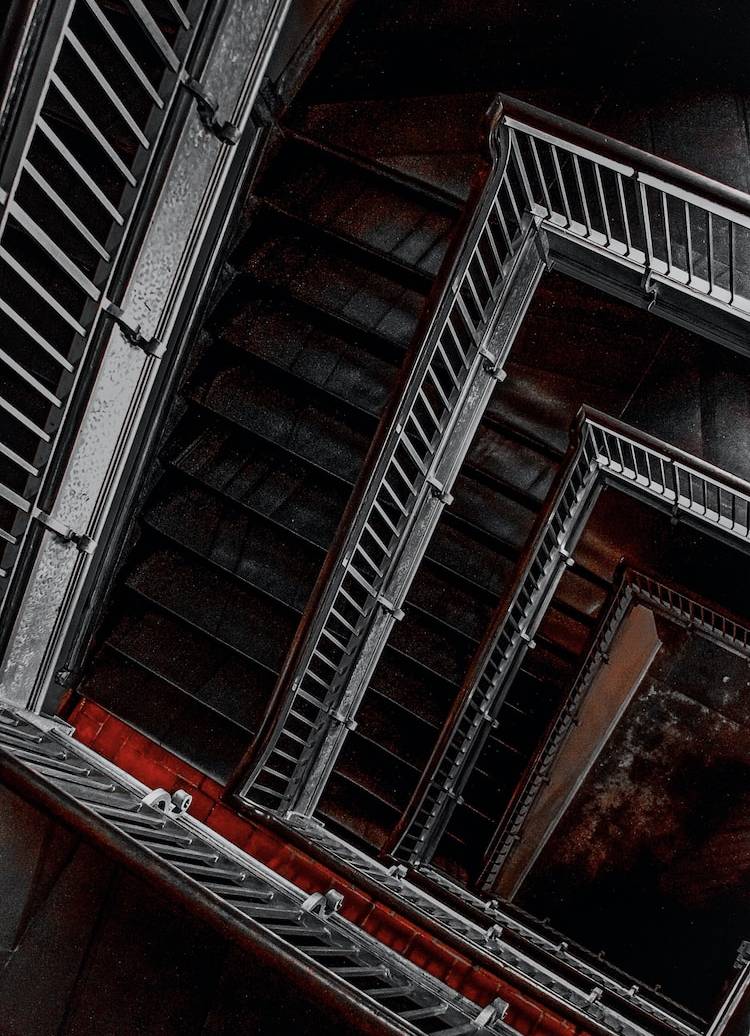 Words By Christopher Paul Jones, Harley Street phobia expert and author of ‘Face your Fears – 7 steps to conquering phobias and anxiety’
Words By Christopher Paul Jones, Harley Street phobia expert and author of ‘Face your Fears – 7 steps to conquering phobias and anxiety’
There are lots of great things about Halloween: pumpkin carving, trick or treating and apple dunkingto name a few. But, for some people, it can set off their fears and phobias, including Samhainophobia – the phobia of Halloween itself.
There are a number of causes of a fear of Halloween:
 Religious beliefs: Fearing Halloween due to its connotations with evil. Like my Mother, who really didn’t like Halloween for this reason.
Religious beliefs: Fearing Halloween due to its connotations with evil. Like my Mother, who really didn’t like Halloween for this reason.
Social phobias: Guising, knocking on doors and talking to strangers can create fear in some children. Especially if they have had bad experiences, like being told to get off the doorstep.
The main causes of a Halloween phobia however, are the number of fear inducing activities associated with 31st October. Here are some top Halloween phobias:
Arachnophobia – fear of spiders
Spiders is one of the biggest phobias with 55% of women and 18% of men having this fear.
If somebody has a fear of spiders it tends to stimulate feelings of disgust and repulsion which trigger a fearresponse in them. It is believed that this is formed around us having an aversion to creatures that look alien and have fewer similarities to humans. Or even a fear of being harmed by a spider.
A spider phobia can also be triggered from your parents. For example, if you watched your mom jump up and scream when she saw a spider, it’s then likely to create a phobia in you.
Ophidiophobia – fear of snakes
It’s said 1 in 3 people have this fear, and as with spiders it’s often linked to the fear of being harmed or the rather alien way they look and move. It’s thought it could be linked to our evolution where we are hardwired to avoid these types of creatures.

Necrophobia – fear of anything to do with death
For example, coffins, graveyards, bones, and corpses etc. Unfortunately, if your phobia is triggered by representations of death then Halloween is definitely a difficult time for you.
This phobia can also be triggered by a traumatic experience i.e. attending the funeral of your grandparents or the pain of bereavement.
Lachanophobia – fear of vegetables
Having a carved-out pumpkin is a Halloween essential. But it’s not the carved-out face that creates the fear for some people it’s the vegetables themselves.
The cause of this fear normally stems from childhood experiences of being forced to eat vegetables and being repulsed by them or even feeling sick from them.
 Maskaphobia – fear of masks or costumes
Maskaphobia – fear of masks or costumes
Like many other fears, this can be created by a past negative event i.e. been scared as a child by someone in a costume.
It can also come from a fear of the unknown, i.e. not being able to see a person’s real face. Seeing somebody with a fixed unchanging expression can also create a phobia of masks. Halloween costumes are often made to be scary, so it’s no surprise that people can be frightened by them and that this fear can stay with them in later life.
Nyctophobia – fear of the dark
While this one is more common amongst children (most children grow out of it as they get older), there are still many adults affected by a fear of the dark.
This fear can be created from not being able to see what’s in the shadows or not knowing how to find your way out if you get scared or trapped. It can also come from our primitive brain that tells us that we need to avoid predators in the night.
Horror movies also like to use the darkness to create fear, and this just reinforces the fear.
Hemophobia – fear of blood
Having a fear of blood is quite common; it’s linked to our fear of pain, injury or death. This phobia can be strong if you had an injury in the past or watched somebody else go through the pain. It can also be created from watching horror or crime movies as a child.
HOW TO OVERCOME YOUR FEARS
The good news is that most phobias can be addressed; in the majority of cases they can be removed completely. Detailed processes for dealing with numerous phobias are in my new book, “Face Your Fears”, but here is a brief look at a seven-stage process I call the Integrated Change System.
 1. Recognise what you’re really afraid of
1. Recognise what you’re really afraid of
Identifying not just the surface-level fear but also the deeper fears it represents is crucial. Is it a fear of harm, a loss of control, a past traumatic event or something else?
2. Relax the conscious mind
Achieving a state of relaxation allows us to work with fears more effectively. The “4-7-8 Breathing Technique” involves inhaling quietly through the nose for four seconds, holding the breath for seven seconds, and exhaling forcefully through the mouth for eight seconds. Repeated three to four times, this acts as a natural tranquiliser for the nervous system.
3. Reward for your fear
Phobias can serve hidden purposes – a secondary gain. One way to find this is to ask:
“Does this fear keep me safe from situations I perceive as dangerous?”
“Do I receive comfort or attention because of this fear?”
“What might I lose if this fear were to disappear now?”
4. Recipe
Everything we do, including phobias, operates according to a subconscious ‘recipe’ – a combination of thoughts, behaviours, and feelings that reinforce, in this case, the fear. Clarity about our recipe for fear makes it easier to change it. A highly effective technique involves changing the internal representation of the fear.
Imagine, say, the spider that triggers your phobia. In your mind’s eye, shrink that image, make it lose its colour, and let it play backward like a film reel running in reverse. This process helps in diminishing the image’s emotional impact. If the bark is a trigger, imagine that sound becoming like a cartoon character.
 5. Release the past
5. Release the past
Finding the first event and changing the mind’s link to fear can have an effect on how somebody will feel about that fear in the future.
One way to release the past is through tapping. Begin by clearly identifying the fear or specific event related to your phobia and hold this memory in your mind.
Start by tapping on the karate chop point (the outer edge of your hand) with the fingertips of the other hand. As you tap, verbalise your fear and your acceptance of yourself despite this fear.
Proceed to tap lightly but firmly on a sequence of points: eyebrow, side of the eye, under the eye, under the nose, the chin, the collarbone, under the arm, and top of the head. Tapping each point about seven times, briefly state your fear to maintain focus on the issue.
After a few rounds of tapping, begin to introduce a positive reframing of your fear. For instance, “I am open to feeling safe around snakes“, for example.
6. Recondition your emotions
Our responses to any fear-inducing stimuli are learned behaviours. These can be unlearned or modified with an exercise known as Emotional Anchoring. Decide on the positive feeling you want instead of fear, and select a memory where you felt this positive emotion strongly. While immersed in this memory, do a simple physical gesture, like pressing your thumb and forefinger together. Repeat with other positive memories. Your chosen physical gesture becomes your anchor – the anchor takes you straight to a positive feeling.
It’s a physical action tied to your positive emotion, creating a new pathway in the brain. Every time you use your anchor and feel that positive emotion, you weaken the old fear response and strengthen the new, positive one.
7. Realise a powerful future
Part of your fear will be “what ifs”. For example, what if it gets dark and I canlt see anything?
We tackle “what ifs” by Script Flipping. Write down as many “what ifs” as you can, then replace each of them with a positive statement or question. For example, what if I can still see OK because of streetlights and the moon?
Take your new statements and questions and visualise them, pairing them with affirmations that reinforce your new narrative – perhaps “I am capable of feeling calm and in control when it’s dark.”
www.christopherpauljones.com